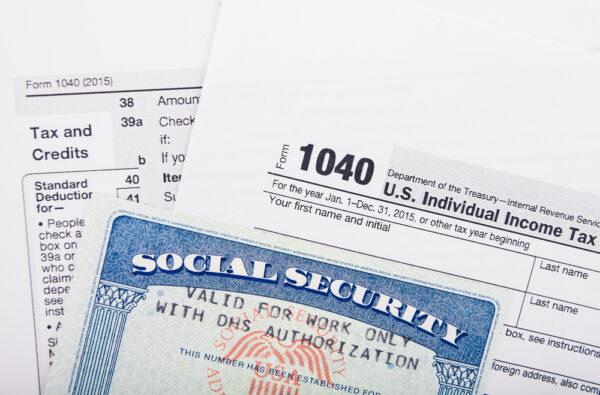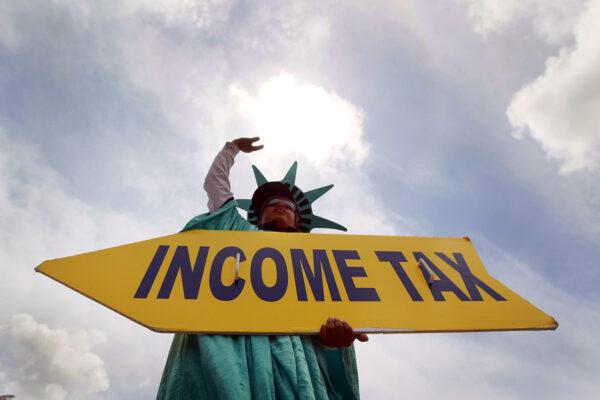“Our new Constitution is now established, and has an appearance that promises permanency; but in this world, nothing can be said to be certain, except death and taxes,” Benjamin Franklin wrote in a 1789 letter.
Steps to Take Now for a Tax-Free Retirement
However, The Yale Book of Quotations quotes “Tis impossible to be sure of anything but Death and Taxes,” from Christopher Bullock, The Cobler of Preston (1716). And, also it quotes “Death and Taxes, they are certain,” from Edward Ward, The Dancing Devils (1724).Regardless of its origins, that adage is arguably one of the most honest statements about life. And, yes. Even while enjoying your Golden Years, you still have to worry about the taxes.
Estimating Your Taxes in Retirement
Now that I’ve ripped the band-aid off and you know that you’ll have to pay taxes, how exactly are they calculated?Well, they’re based on your income—just like your pre-retirement days. However, different rules apply to the various retirement income streams that you’ll receive.
Social Security Income
If this is your sole source of income, then you don’t have to pay taxes. But, what if you have other sources of income? When you file a return, you might have to include up to 85 percent of your benefits as taxable income.IRA and 401(K) Withdrawals
The good news? Generally, Roth IRA distributions are tax-free. The reason is simply that you paid taxes on this money upfront.That’s not the case with tax-deferred retirement accounts. These include 401(k) plans, 403(b) plans, and 457 plans, as well as traditional IRAs.
Why? Well, since they’re tax-deferred, that means you must report withdrawals from these plans on your tax return as taxable income.
Just note that the amount of tax will depend on a couple of factors—namely, the total amount of income and deductions you have. And what tax bracket you’re in.

Pension Income and Annuity Distributions
According to the IRS, “If you receive pension or annuity payments before age 59½, you may be subject to an additional 10 percent tax on early distributions, unless the distribution qualifies for an exception.”- That was “made as a part of a series of substantially equal periodic payments that begins after your separation from service.”
- You “made because you’re totally and permanently disabled.”
- They were “made on or after the death of the plan participant or contract holder.”
- You “made after your separation from service and in or after the year you reached age 55.”
- That is “up to $5,000 made within a year of the birth or adoption of your child to cover birth or adoption expenses.”
Investments Income
Just like you did before retiring, you’re going to have to pay taxes on capital gains, dividends, and interest income. Any income you’ve earned from investments will be reported on a 1099 tax form each year. And, the financial institution that holds these accounts will send you this form directly.What if you’re selling investments to generate a retirement income? You must report this on your taxes.
Gains When Selling Your Home
As long as you’ve lived in your home for at least two years and you have gains less than $250,000 if you’re single ($500,000 if you’re married), then you won’t have to pay taxes on selling your home. It does get tricky when you’re selling a home that you’ve rented out.
How Can You Calculate Your Tax Rate?
Well, this will depend on the sources and income. Generally, you’ll want to list all of your retirement income and add that up. Next, you’ll reduce that by the deductions that you anticipate for the year.You can enter this information into your tax software program. Or, you can save yourself the hassle and pass it along to your accountant.
Know Your Tax Bracket
If you want to reduce your tax burden or possibly enjoy a tax-free retirement, then this is the absolute first step you must take.- “Being ‘in’ a tax bracket doesn’t mean you pay that federal income tax rate on everything you make,” adds Orem.
- “The government decides how much tax you owe by dividing your taxable income into chunks—also known as tax brackets—and each chunk gets taxed at the corresponding tax rate.”
- You will owe 10 percent of taxable income if you make $0 to $9,875.
- Do you make $9,876 to $40,125 ($19,751 to $80,250 for couples)? If so, you’ll owe $987.50 plus 12 percent of the amount over $9,875. For joint filers, this would be $0 to $19,750
- You would fall into the 22 percent if you made $40,126 to $85,525 and $80,251 to $171,050 for joint filers. As such, you would owe $4,617.50 plus 22 percent of the amount over $40,125.
- If you earned $85,526 to $163,300 if single and $171,051 to $326,600 if married then you’ll have to pay $14,605.50 plus 24 percent of the amount over $85,525 in taxes.
- You’ll owe $33,271.50 plus 32 percent of the amount over $163,300 if you had income between $163,301 to $207,350 (single) and $326,601 to $414,700 (couples)
- For those earning $207,351 to $518,400 ($414,701 to $622,050 if filing jointly), you’re on the hook for $47,367.50 plus 35 percent of the amount over $207,350.
- If you raked in $518,401 or more (single) and $622,051 plus for couples, then you’ll owe $156,235 plus 37 percent of the amount over $518,400.

Asset Location
“Financial advisors generally encourage account diversification among clients—meaning, having some savings in a taxable account, a traditional (pre-tax) 401(k) or individual retirement account, and a Roth 401(k) or IRA,” writes Greg Iacurci for CNBC.As a result, investors have more flexibility when withdrawing funds.
“Investors can maximize their tax savings by holding certain investments and funds in the appropriate type of account,” he adds. Known as “asset location,” this “boosts an investor’s after-tax rate of return.”
“For example, investors should generally consider holding stocks and stock funds in taxable accounts,” says Iacurci. “These investments are more ’tax-efficient'—meaning most of their return is from capital gains taxed at a rate that’s less than ordinary income.”
“On the other hand, investors should generally hold bonds and bond funds in retirement accounts,” Iacurci advises. “These investments are less tax-efficient since most of their returns are dividends taxed as ordinary income.”
So, let’s say that you’re an investor with a grand in a taxable account and another $1,000 in a 401(k) and want “a 50-50 stock-to-bond allocation.”
Diversity Your Tax Liability
“When looking at your retirement savings, it’s important to consider the types of accounts you’re saving and investing in. Tax-deferred accounts,” recommends Tony Drake, CFP®. Examples include a 401(k) and traditional IRA. These “offer tax advantages now” since you “contribute money before taxes.” However, you’ll still owe the IRS when you make a withdrawal.“Tax-exempt accounts, like a Roth IRA or Roth 401(k), offer tax advantages in the future,” adds Drake. “Your money is taxed before you contribute to the account, but you can withdraw it tax-free in retirement.”

You should also consider taxable accounts, such as brokerage and savings accounts. You’re “taxed on the interest you earn and on any dividends or gains,” he says. “Investment accounts are an important part of your overall financial plan, especially during your working years as you grow and accumulate your savings for retirement.”
Catch-Up on Contributions
Once you hit age 50, you’re eligible for an additional tax break if you make catch-up contributions. For 2020 and 2021, you’re permitted to defer taxes on an additional $6,500 in a 401(k) and $1,000 in an IRA.Make Tax-Exempt Investments
In addition to 401(k)/403(b) employer-sponsored retirement plans and IRAs, here some other tax-free investments you should throw money at;- Health Savings Account (HSA)
- Municipal Bonds
- Tax-free Exchange Traded Funds (ETF)
- U.S. Series I Savings Bond
- Bonus: Indexed Universal Life Insurance
- Charitable Donations/Gifting
- 529 Education Fund
- 1031 Exchanges
Take Advantage of the Saver’s Credit
Have you earned up to $32,500 and you’re single? What if you’re a couple with $65,000 set aside?You can make contributions to your 401(k) or IRA using the saver’s credit. If you take advantage of this, you can either increase your refund or reduce the tax owed. How much? It could be as much as $1,000 for individuals and $2,000 for couples.

Watch Your Timing
A surefire way to pay the lowest amount of taxes throughout your retirement is to maintain a level of income. Why? Because if your income was low this year, but high next, then you will end up paying more in taxes.In other words, you want your withdrawals and selling of assets to be steady. For instance, if you sold capital assets at a loss, you might want to unload other assets that performed well to offset your capital gains.
Be Strategic About Social Security Benefits
If you don’t need your Social Security benefits, then push back receiving this benefit until after 70. The reason being is that you’ll earn additional credits, which will increase your monthly benefits. You also don’t have to worry about paying taxes on Social Security right now.Once you receive these benefits, they’ll either fully tax-free or are included in your gross income at 50 percent or 85 percent. It just depends on your income.
Relocate to a Tax-Friendly State
If you don’t already reside in a tax-friendly state, consider relocating to Alaska, Florida, Nevada, South Dakota, Tennessee, Texas, Washington, or Wyoming. These states don’t have income taxes.New Hampshire taxes only interest and dividends. Meanwhile, Illinois, Mississippi, and Pennsylvania don’t tax distributions from 401(k) plans, IRAs, or pensions. And Alabama and Hawaii don’t tax pensions but still tax distributions from 401(k) plans and IRAs.
Thanks to the Tax Cuts and Jobs Act, this is particularly important as just $10,000 in local property, state and local income, or sales taxes can be deducted for federal income tax purposes.
Also, federal law bars taxing residents on retirement benefits that were earned in another state. So, if you want to pack up and leave high-tax states like New York or California, you can still move to a no-tax state and still collect your pension tax-free.

Remember Required Minimum Distributions
A required minimum distribution (RMD), is the required minimum amount of money that you must withdraw from a tax-deferred employer-sponsored retirement plan. These include most 401(k)s and IRA. And, it occurs when you reach age 72—or if you turned 70½ in 2019.If you don’t comply, the IRS will slap you with a hefty penalty fee, usually taxed at 50 percent.
- Withdrawing funds at 59 ½.
- Rolling over to a Roth IRA.
- Delaying RMDs by continuing to work.
- Donating your RMD to a qualified charity.
- Investing in a qualified longevity annuity contract or variable annuity.
- Withhold money from your RMD to cover your entire tax bill on all your income sources for the year.
The Epoch Times Copyright © 2022 The views and opinions expressed are only those of the authors. They are meant for general informational purposes only and should not be construed or interpreted as a recommendation or solicitation. The Epoch Times does not provide investment, tax, legal, financial planning, estate planning, or any other personal finance advice. The Epoch Times holds no liability for the accuracy or timeliness of the information provided.






